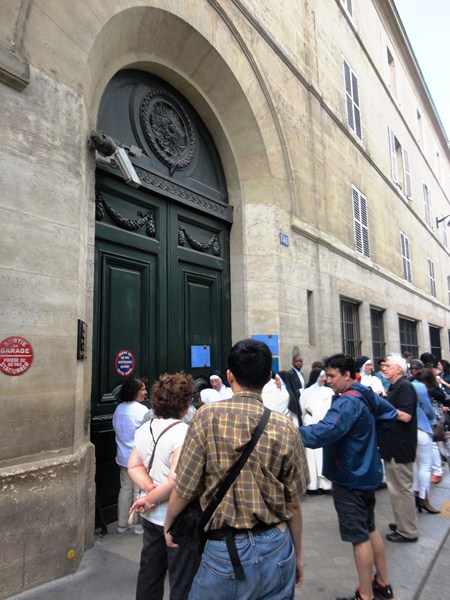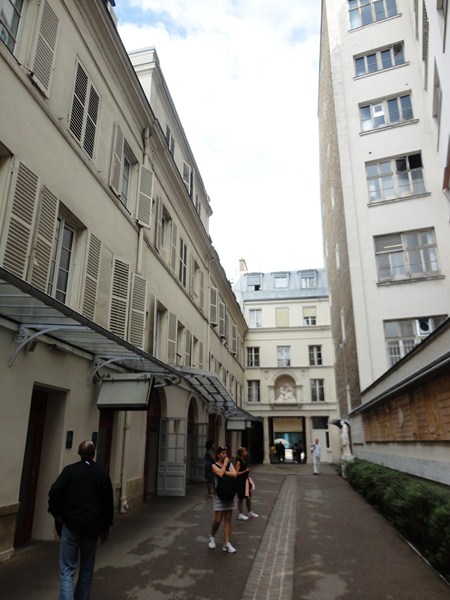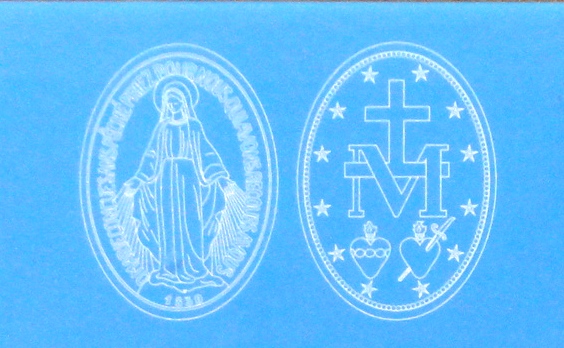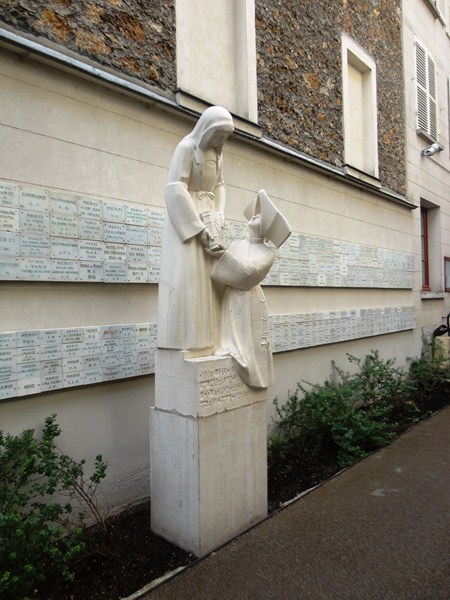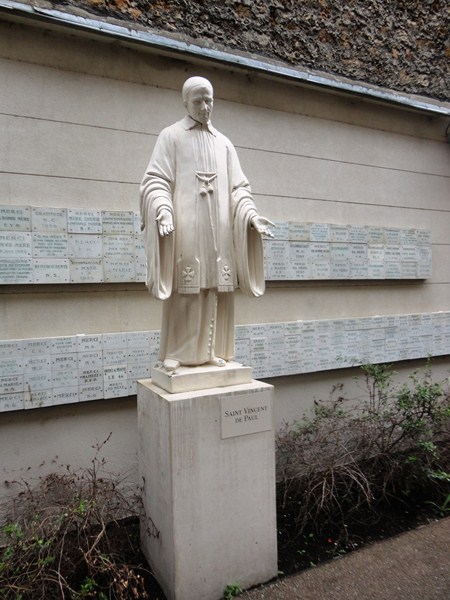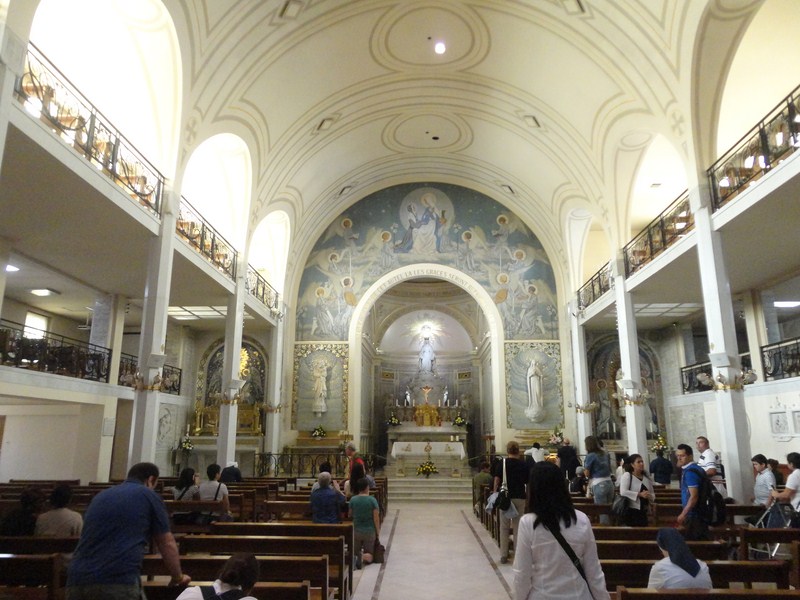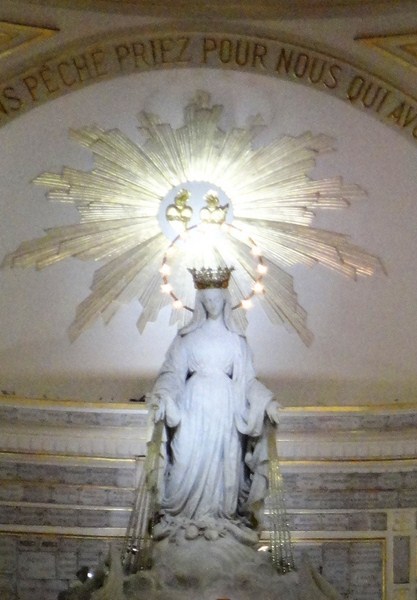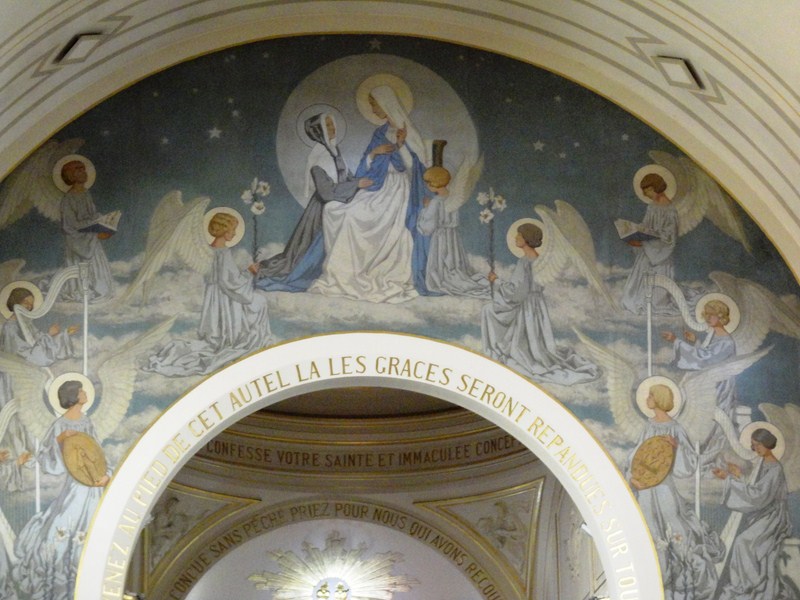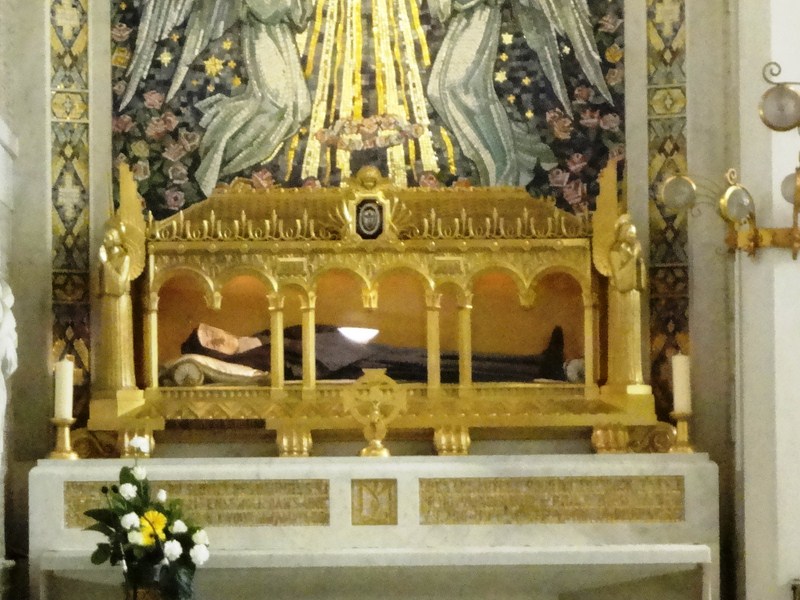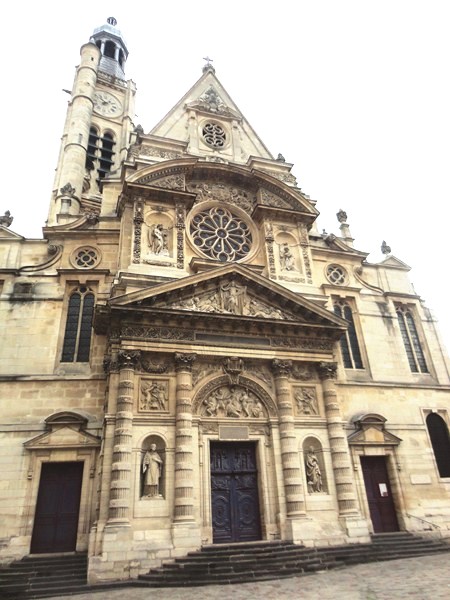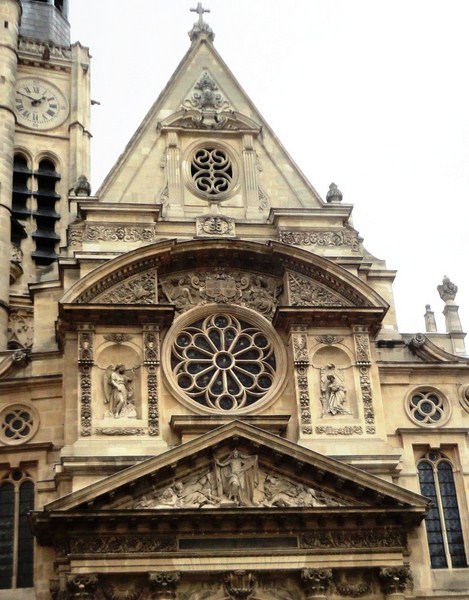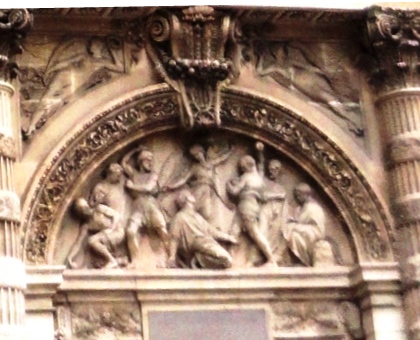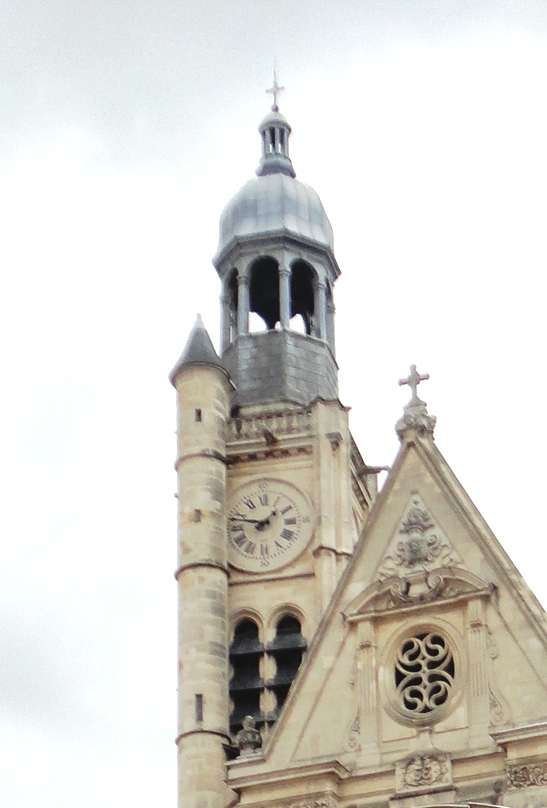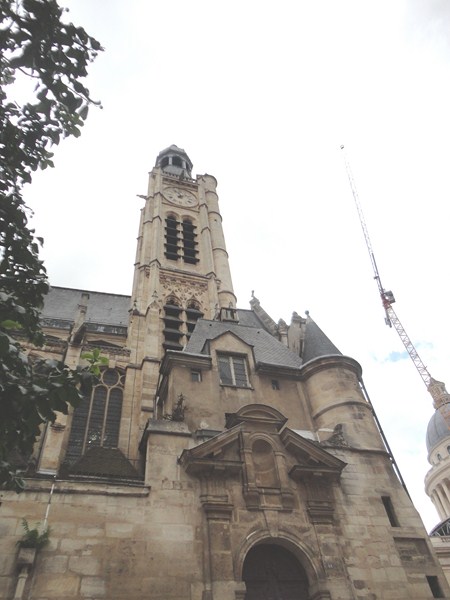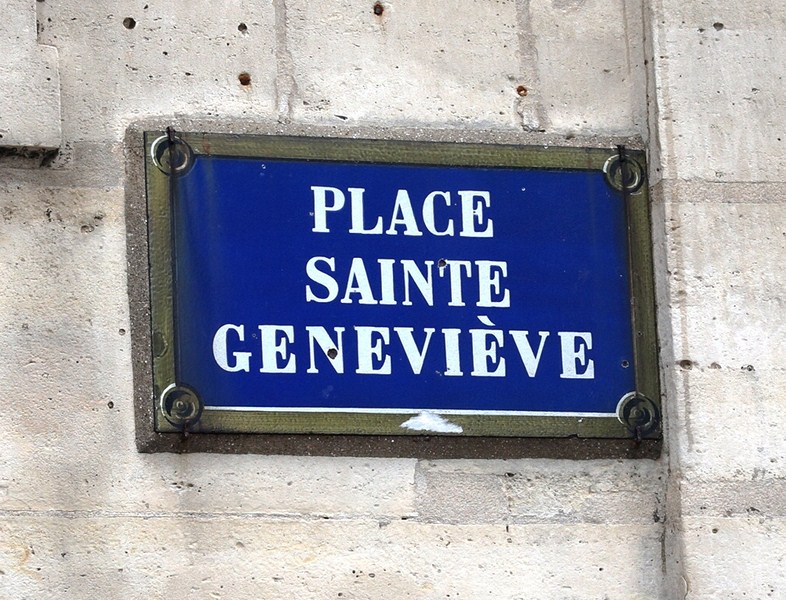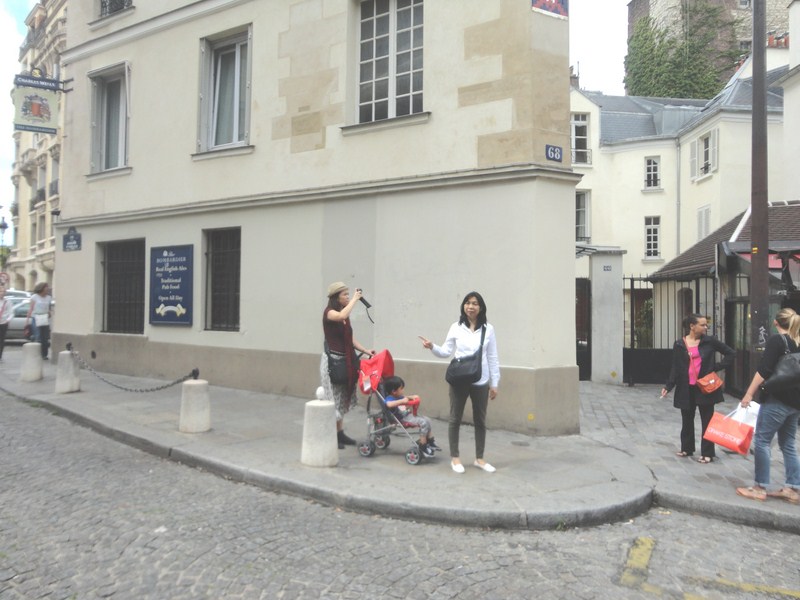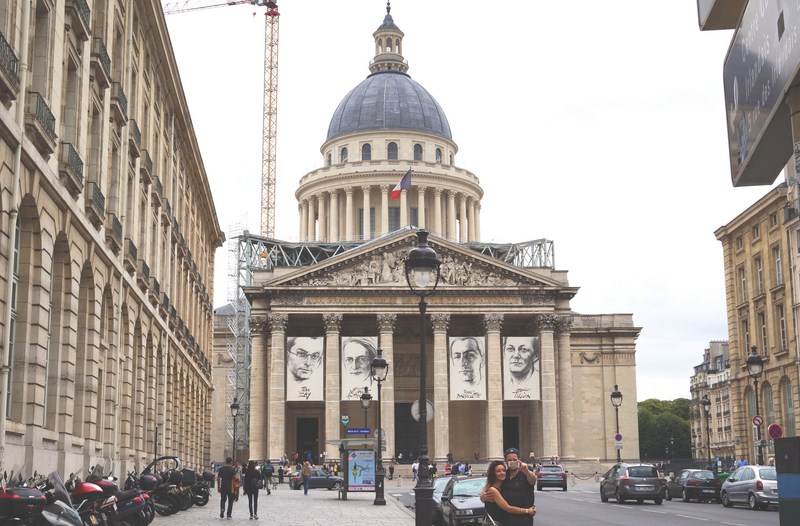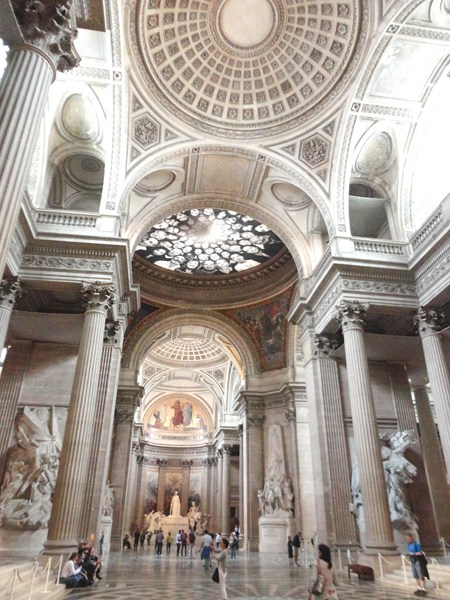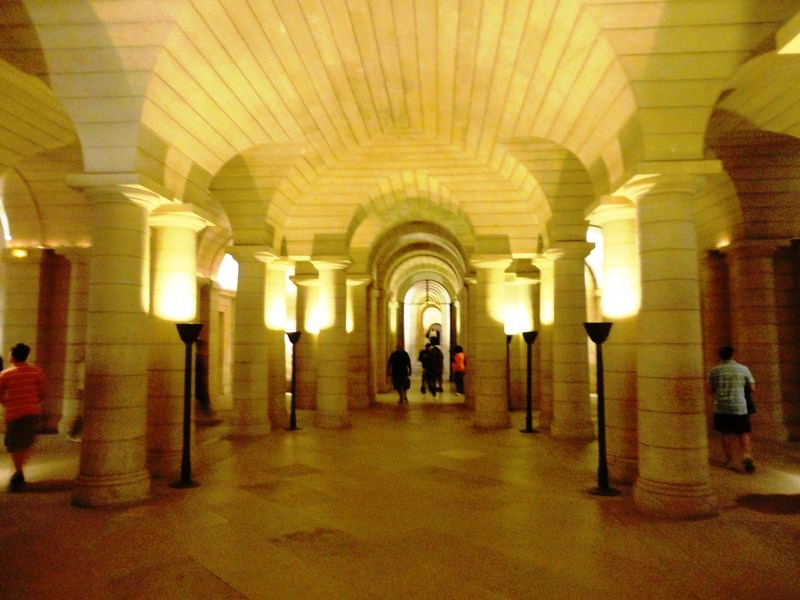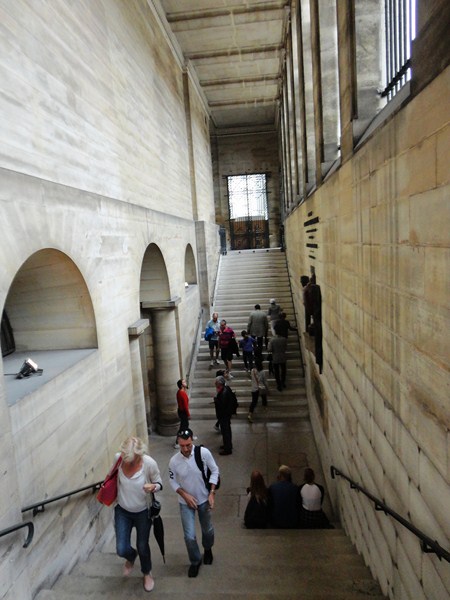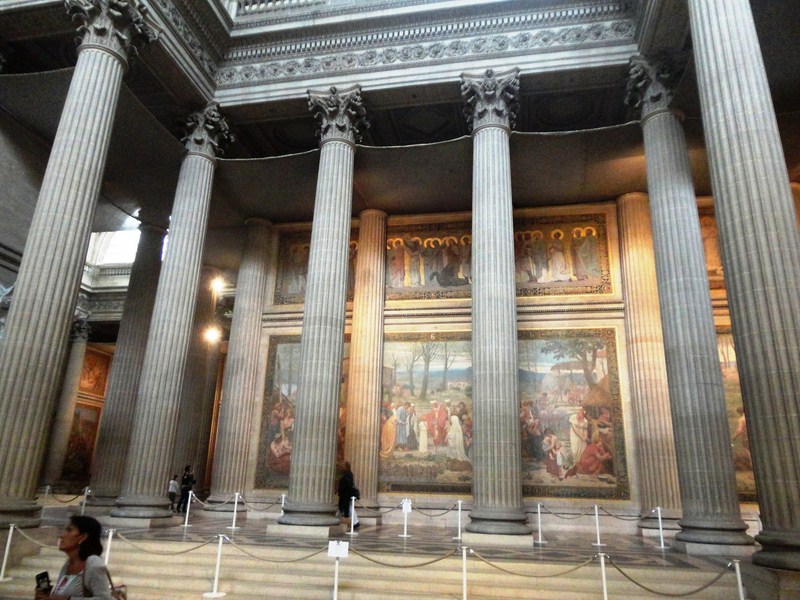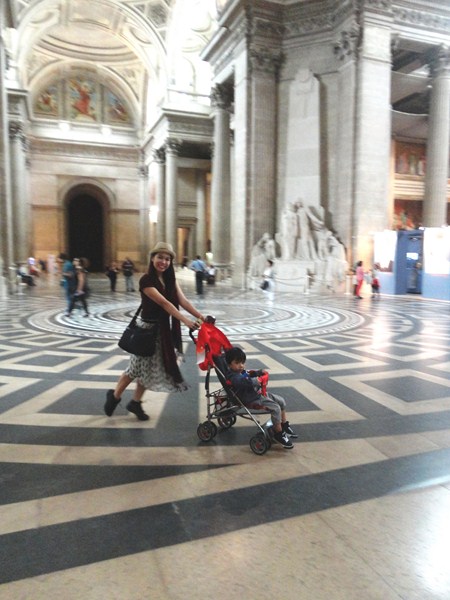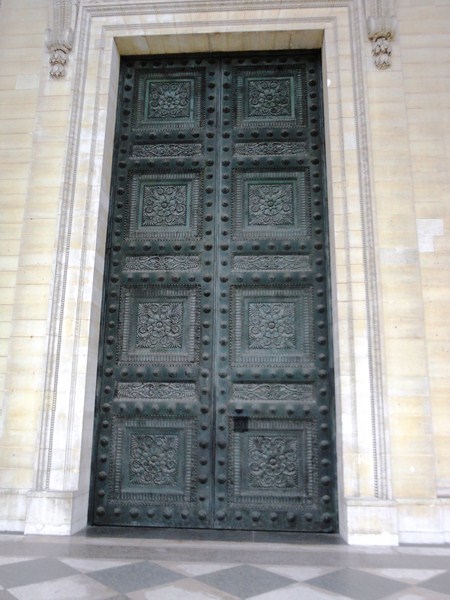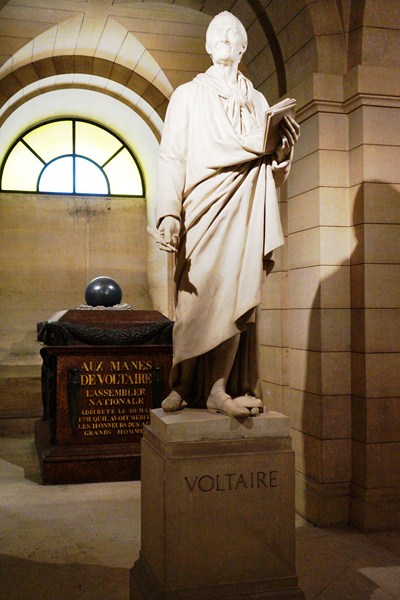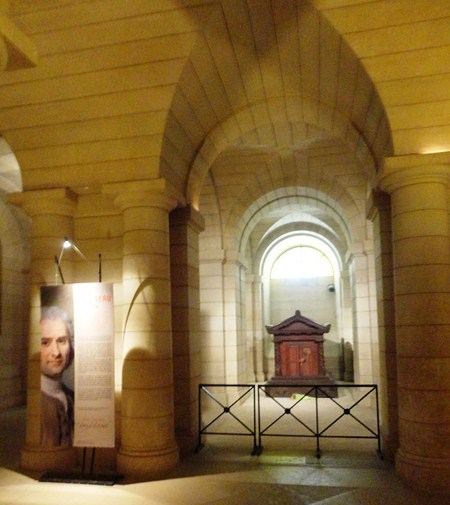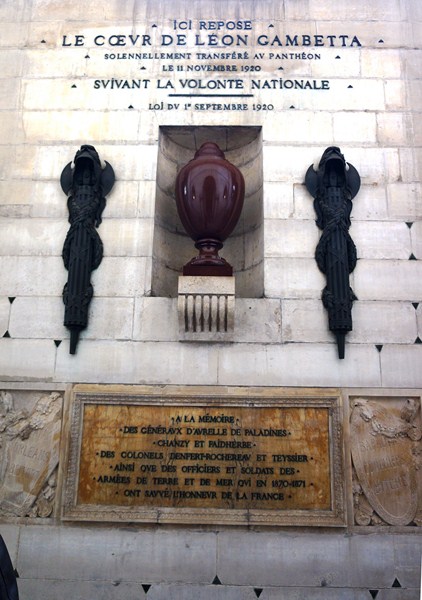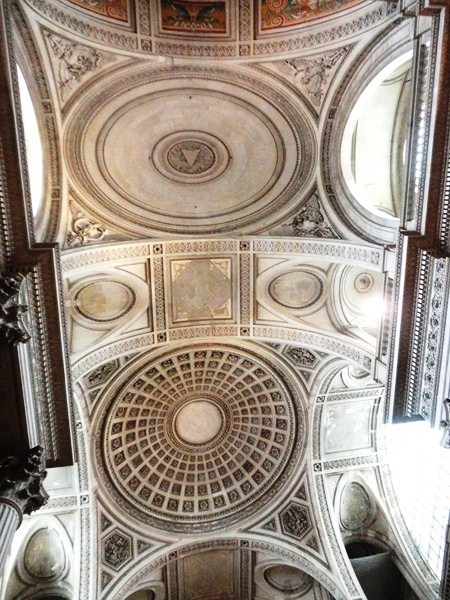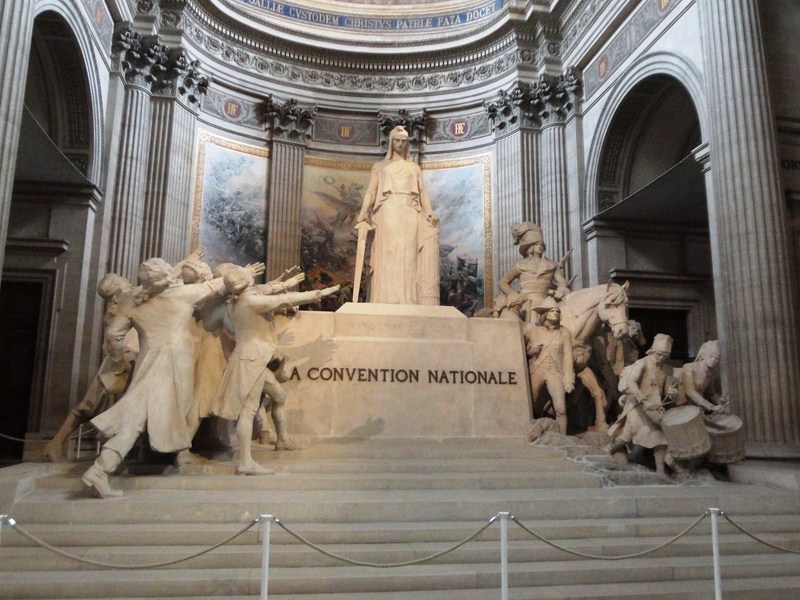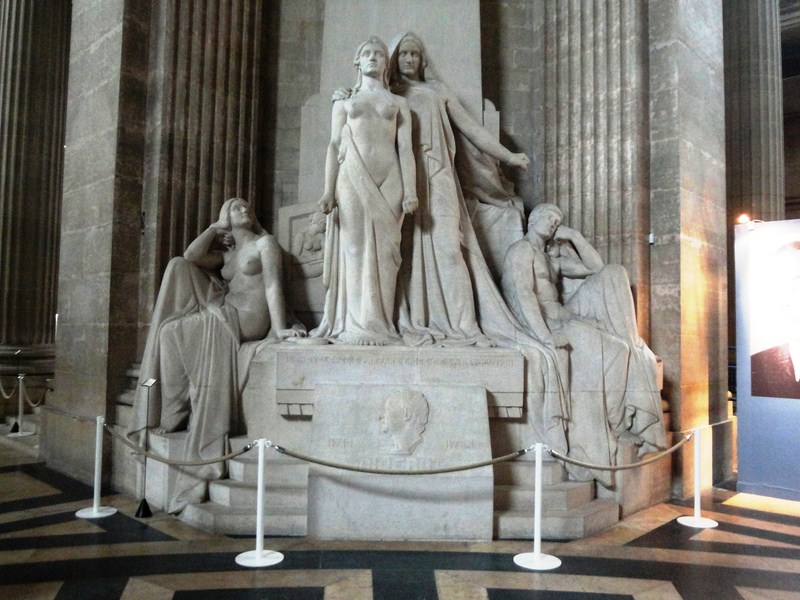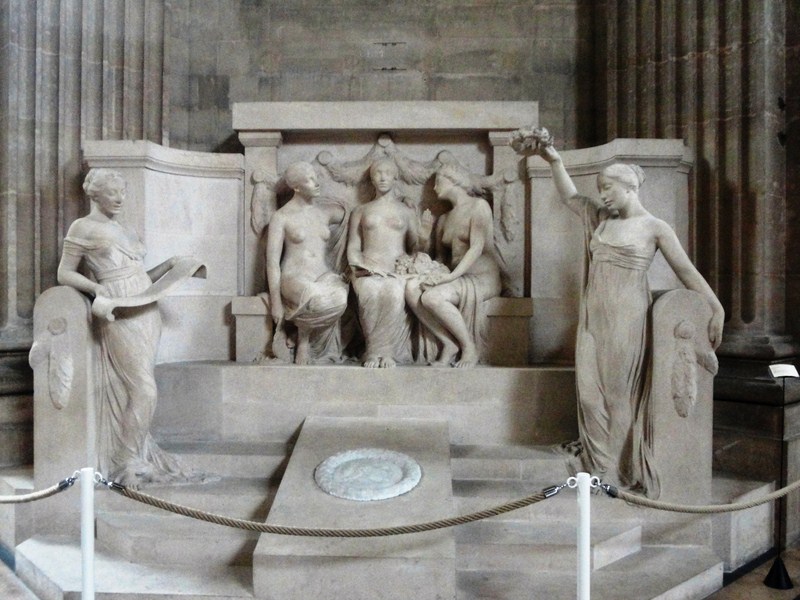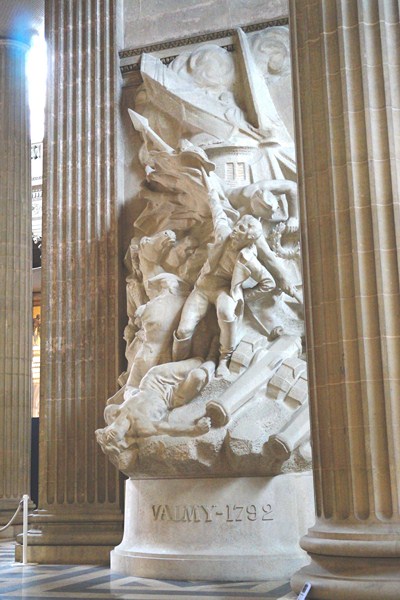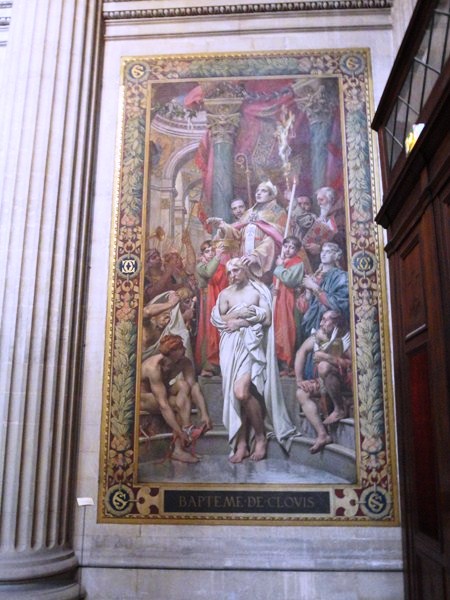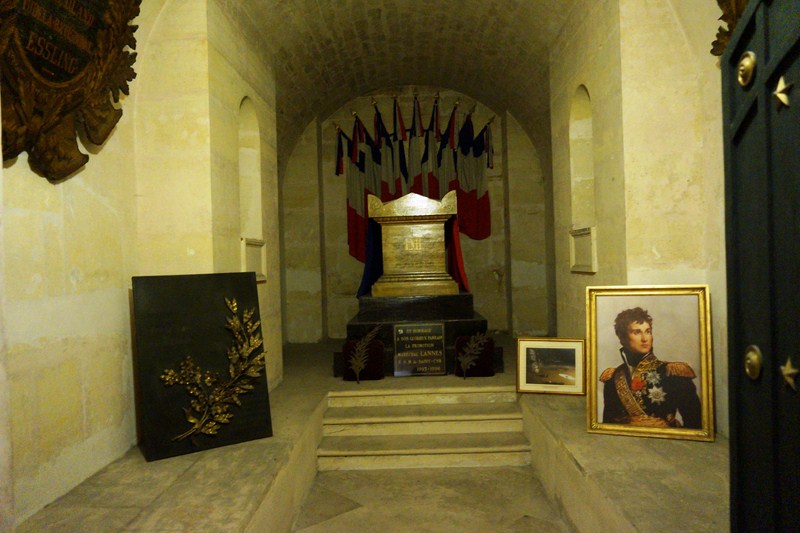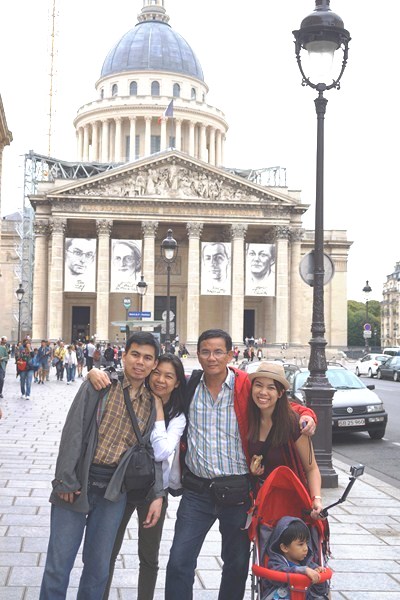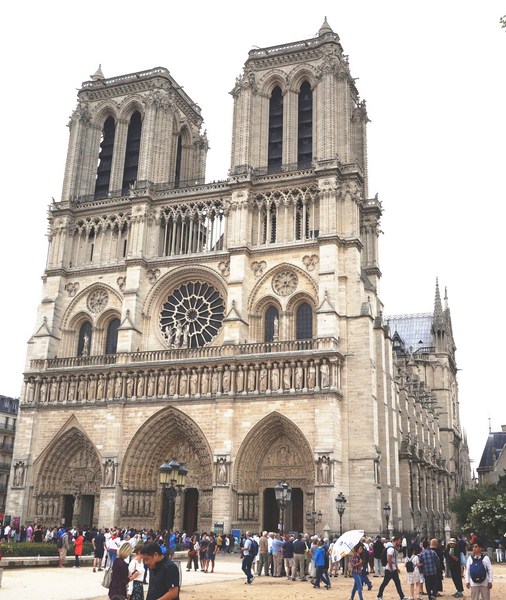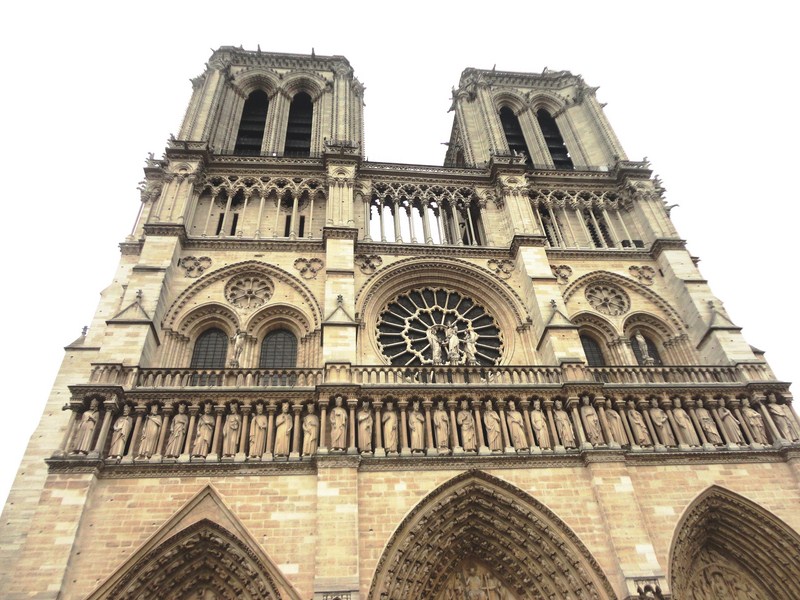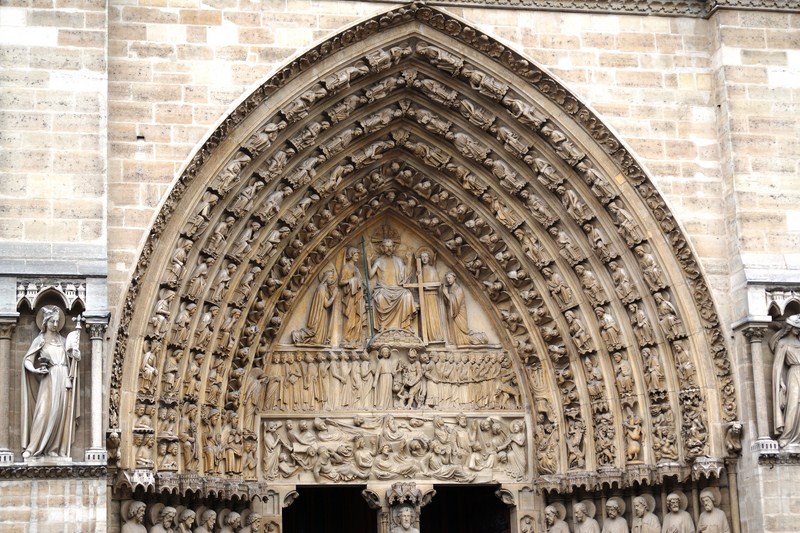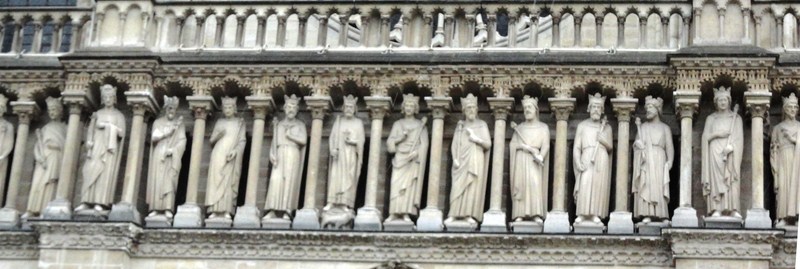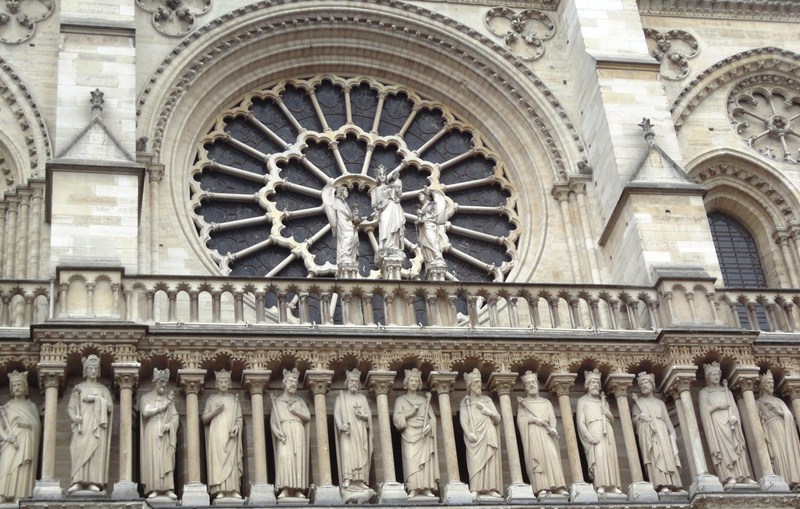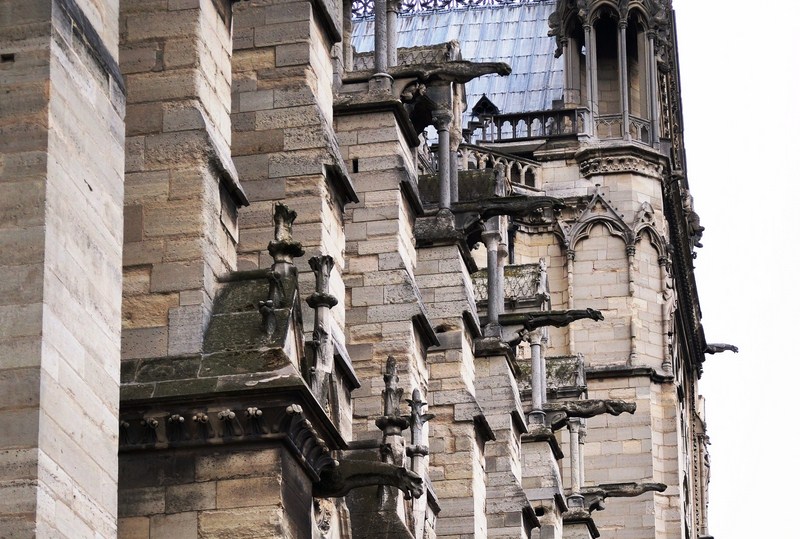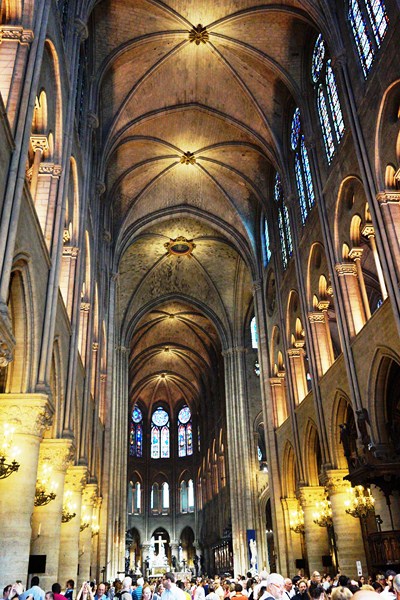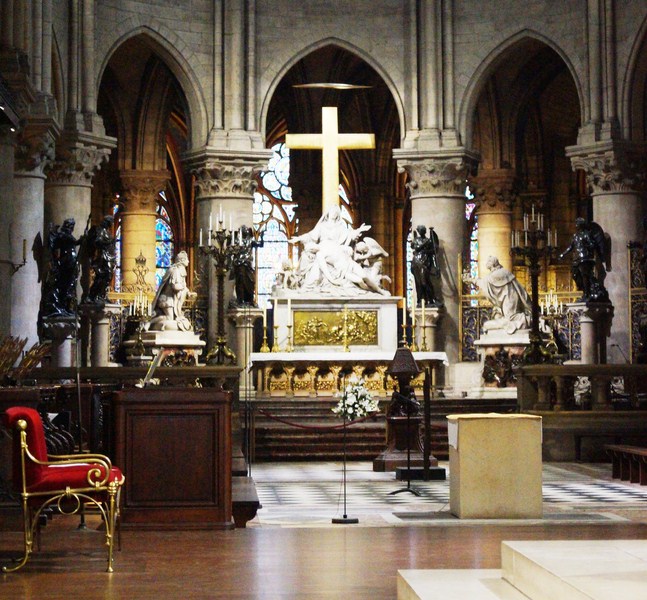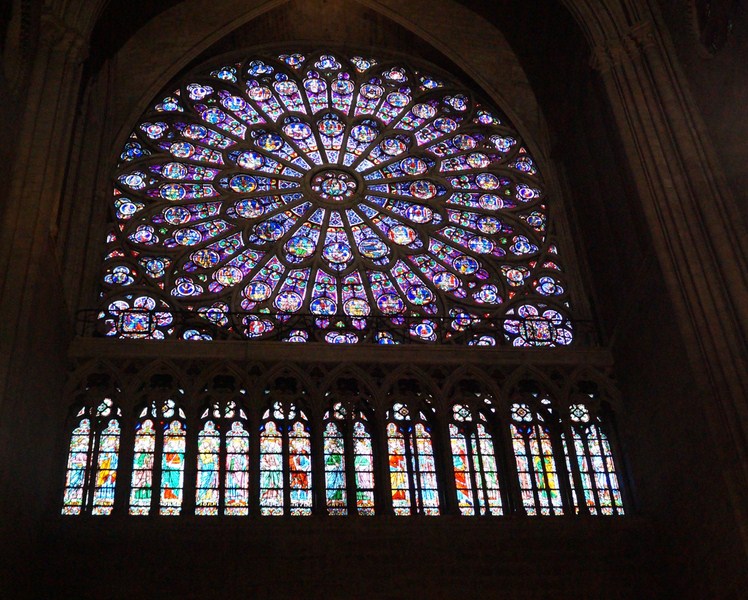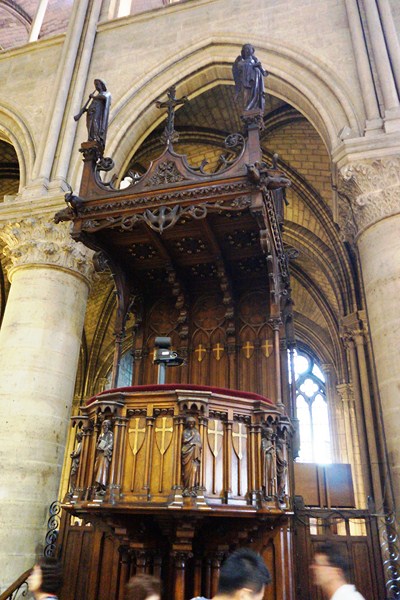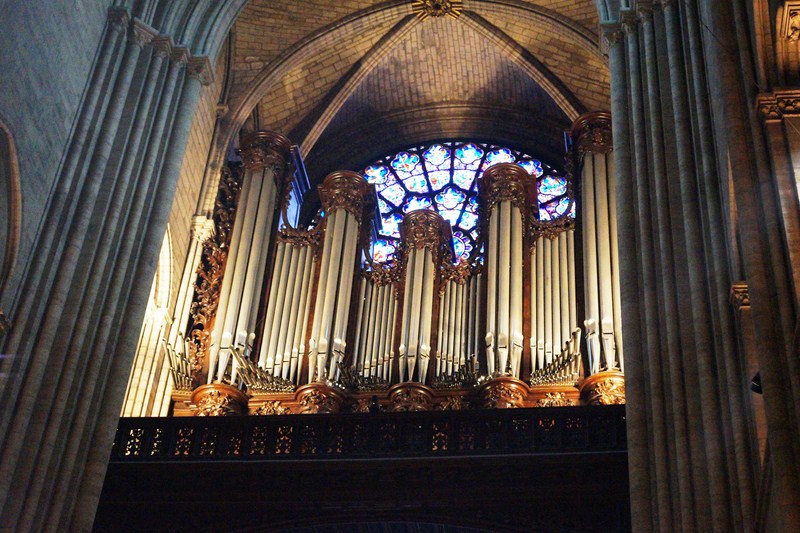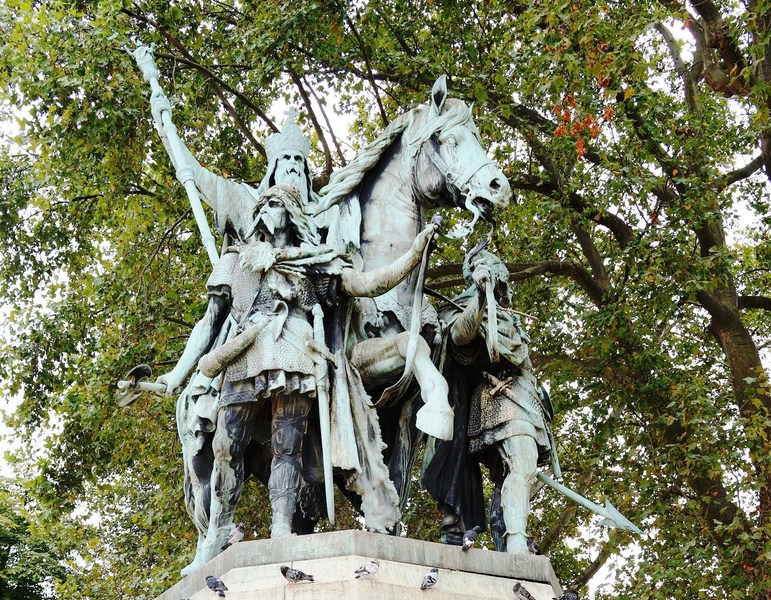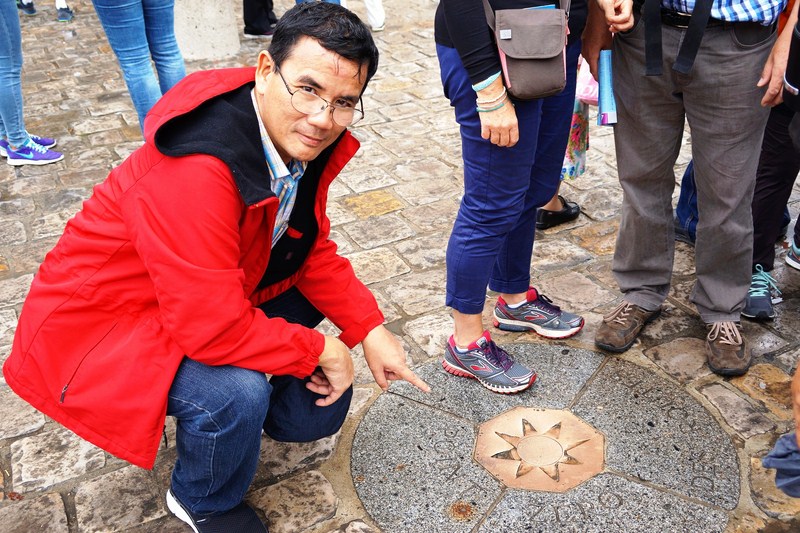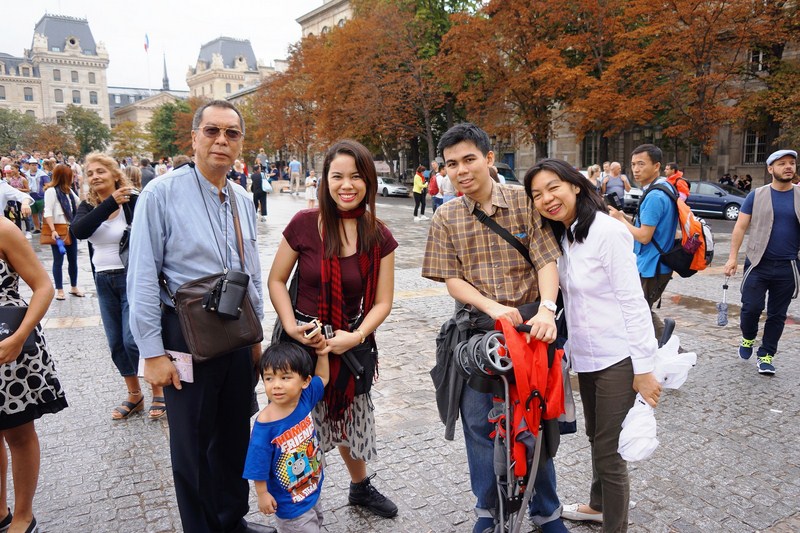A number of places we visited in our itinerary, as prepared by my brother-in-law Manny, included religious pilgrimage sites and, here in Paris, he made it a point to visit one. On our very first day in the city, right after our visit to the iconic Pantheon, we dropped by the Chapel of Our Lady of the Miraculous Medal.
A Marian shrine, it is the site of 3 Marian apparitions of the Blessed Virgin Mary said to have been experienced by then 24 year old Marian visionary St. Catherine Labouré in 1830. On the first visit, the night of July 18, she received a request that a Confraternity of the Children of Mary be established.
Later, on a second apparition on November 27, she was to request the creation of a medal with the following invocation: “O Mary, conceived without sin, pray for us who have recourse to thee.” The reverse side bore the letter “M” surmounted by a cross and over 2 hearts, one encircled by a crown of thorns and the other pierced with a sword. From May 1832 onwards, the medal, which is extraordinarily disseminated and said to convert, protect and perform miracles, is called as the Miraculous Medal by the faithful.
It was also here that, for three successive days, while at prayer, St Vincent de Paul, showed her his heart, each time in different colors – white (the color of peace), red (the color of fire) and then black (an indication of the misfortunes that would come upon France and Paris, in particular). Shortly after, Catherine saw Jesus Christ present in the Sacred Host and, on June 6, 1830, the Feast of the Holy Trinity, Christ appeared as a crucified King, stripped of all his adornments.
The construction of a chapel began in the medieval Hôtel de Châtillon in 1813 and, on August 6, 1815, the solemn benediction of the chapel was dedicated to the Sacred Heart of Jesus. By imperial decree, it was attributed to the Daughters of Charity of St. Vincent de Paul where Catherine entered on April 21, 1830, a few months before the apparitions. In 1849, the chapel was expanded after the apparitions to accommodate all those who wish to pray at the altar and, in the following years, underwent many other transformations. The present chapel is a complete renovation done in 1930, the year of its centenary.
The Chapel of Our Lady of the Miraculous Medal is more commonly referred to by its address, “140 rue du Bac,” or, simply, the street on which it is situated, rue du Bac. We arrived there 30 mins. before its 2:30 PM opening and crowds of Roman Catholic pilgrims were slowly gathering outside the gate.
Upon entering, we first visited the chapel. Its walls are beautifully decorated with mosaics and murals and over the altar (where the Virgin Mary Mary promised prayers will be answered) is a white marble statue of the Blessed Virgin sculpted in 1850 and crowned with 12 stars. From her outstretched palms, rays of graces lead down to the floor.
Its tabernacle, which dates back to the 17th or 18th century, is unchanged since 1815. The tabernacle came from the chapel of the Sisters of Mercy, installed there before the French Revolution, and allocated to the Daughters of Charity in 1800. St. Catherine said that it was in front of the tabernacle that the Blessed Virgin Mary prostrated herself on the night of July 18, 1830. She also appeared above it during the third apparition on December 30, 1830. In 1850, an ivory crucifix was placed on top of it.
The body of St. Louise de Marillac and the heart of St. Vincent de Paul, founders of the Daughters of Charity of St Vincent de Paul, are kept there. Lying inside a glass coffin, at the side altar of the chapel, is the uncorrupted body of St Catherine, found miraculously preserved after it was exhumed in 1933, over 56 years after her death on December 31, 1876. Pope Pius XII declared her a saint on July 27, 1947.
Chapel of Our Lady of the Miraculous Medal: 140 Rue du Bac, 75340 Paris, France. Tél : +33 (0)1 49 54 78 88. Fax : +33 (0)1 49 54 78 89. Open daily, 7:30 AM – 1 PM and 2:30 – 7 PM, Tuesdays, 7:45 AM – 7 PM.
How to Get There: Take the Sèvres – Babylone Paris Métro (Lines10 – 12) or Bus 39, 63, 70, 84, 87 and 94.

